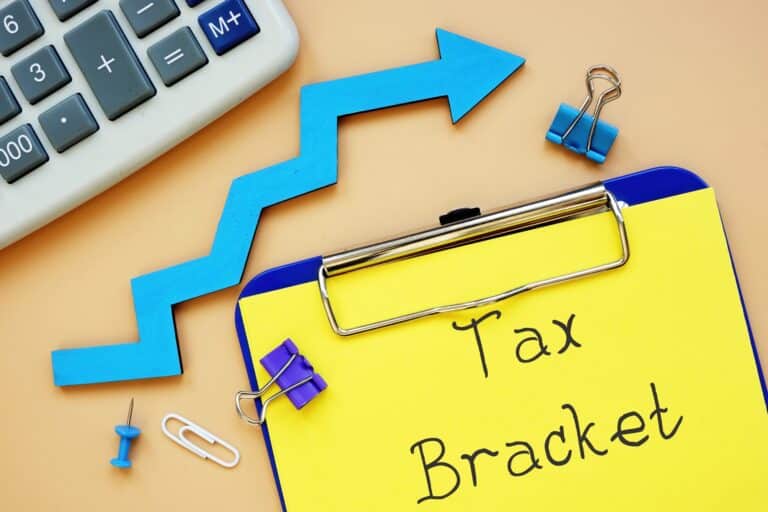The Research and Development (R&D) Tax Credit can be tricky to navigate. This tax credit is intended to assist companies who are investing money back into their own firm. It is a dollar-for-dollar offset against tax liabilities that allows for unused credits to be carried forward for up to 20 years. It is also an incentive to keep companies within the US competitive on a global scale. Oftentimes, this credit is underutilized simply because business owners are unaware that they qualify for the credit.
Many marketing firms that know about the R&D tax credit think because the credit can be quite large, it only applies to enormous tech gurus. However, most design, technical and developmental work necessary to develop today’s digital marketing and media endeavors usually qualifies for the credit. In fact, any company that is developing, designing, or improving upon products, processes, formulas, inventions, or software typically qualify for the R&D tax credit.

How do you qualify?
The IRS outlines how to determine which firms qualify for the deduction under section 41. First, it is important to understand which research expenses and services qualify for the tax credit.
Typically, the qualified research activities fall under three different expenditures — internal W-2 payroll, US-based services and supplies. The W-2 wages occur from direct employees performing research, supervisory work overseeing research activities, and directly-related support activity wages. Qualified expenses are supplies consumed by research activities, including, but not limited to:
- Production molds, tooling or patterns used in research.
- Lab supplies from testing.
- External and internal prototype costs.
- Costs of short-term prototype molds.
- Costs of production molds, tooling or patterns.
- Scrapped material from experimental production.
- Cloud computing expenses that are directly related.
All-in-all, the expenses claimed with the R&D credit can be made up of either in-house or contract research incurred by the taxpayer in the taxable year within the United States.
An in-house expense is any wage paid or incurred to an employee, any amount paid or incurred for supplies necessary to conduct research, and any amount incurred to another person to use computers used in the research process. Contract expenses refer to 65% of any amount paid or incurred by the taxpayer to another individual or firm. Qualified service expenses can be any expense related to the act of the research itself or the direct supervision or support of research activities.
Although the activities of a firm may qualify them to receive the credit, there are a few other important factors to consider. First, the firm must not have $5 million in gross receipts or more in that taxable year. If utilizing R&D for a payroll credit, a firm is only eligible in their startup phase through their fifth year in business.
In order to qualify as research under IRC section 41, the activities must pass the four-part test:
- ONE: Intended to resolve any technological uncertainty present at the project or initiative’s outset, related to the methodology or capability for improving or developing the business component or its appropriate component design.
- TWO: Reliant on biological, computer or physical science, engineering or other hard science.
- THREE: Related to improving existing or creating a new business component, product or process, internal use computer software, formulas, techniques or inventions for sale or use in the entity’s trade or business. Plus, it must substantially constitute an experimentation process that involves the evaluation and testing of alternatives designed to eliminate technological uncertainty.
- FOUR: Software developed for internal use must be innovative and reduce costs or improve speed substantially. Developing the software must involve a major economic risk, call for the commitment of a significant amount of resources and be subject to a great deal of uncertainty as to if the investment can be recovered within a reasonable period. The software must not be commercially available, and the entity cannot lease, purchase or license and use it for its intended purpose without being forced to make major modifications to it.
What is not covered by the R&D tax credit?
Research and development activities involve a variety of people, departments, supplies and resources. As a result, not all research and development activities fall within the parameters of R&D Tax Credits program. Research related activities that do not qualify for the R&D tax credit include:
- Any social science, art, or humanities research
- Research that is conducted outside the United States.
- Research conducted after commercial production.
- Duplicating an existing business component.
- Funded research.
- Adaptations of existing components to due a specific customer’s need without significant changes.

What are common R&D organizational models?
The R&D process varies from one company or entity to another.
One model employs a group of engineers tasked with doing extensive research to develop new products, but without a specific application or goal in mind. It is research done for exploration purposes.
A second R&D model involves industrial scientists tasked with using applied research in industrial, technical and scientific fields to facilitate the improvement of current operating procedures and products or creating products for the future.
A third R&D model involves corporations investing in and assisting startups and entrepreneurs by funding business incubators and accelerators. Its goal is to find and develop new innovations that can benefit their companies.
How is the R&D credit calculated?
There are two methods to calculate the R&D credit. The first method is called the regular or “traditional” method. It is calculated at a 20 percent rate and the base amount is the combination of gross receipts incurred in the four proceeding years and the taxpayer’s fixed base percentage. of the taxpayer’s “fixed base percentage” and the average of the taxpayer’s gross receipts for the four preceding years. The fixed base percentage is determined by the ratio of gross receipts for the time period compared to its eligible research expenses. For firms not established in the four prior years, there is a modified rule to establish the fixed base percentage, however, the base cannot be less than 50% of the taxpayers QRE. The calculation would look something like this:
Traditional Illustration
| Current-year QREs | $125,000 |
| 1984–1988 aggregate QREs | $250,000 |
| Divided by: 1984–1988 aggregate gross receipts | $1,000,000 |
| Equals: Fixed-base percentage | 25% |
| Lesser of FBP or 16% | 16% |
| Multiplied by: Average annual gross receipts previous four years | $700,000 |
| Equals: Base amount | $112,000 |
| Greater of base amount or 50% current QREs | $112,000 |
| Excess of current QREs over minimum base amount | $13,000 |
| Multiplied by 20% equals credit | $2,600 |
The second method to calculating the R&D credit is known as the alternative simplified credit, also known as, ASC. This method differs from the first due to a 14% rate for calculation. ASC takes 14% of qualified research expenses that exceed the base amount of 50% of average qualified research expenses of a preceding three-year span. If there are no qualified expenses in a three-year period preceding the filing, then the rate drops to 6% as opposed to 14%. This method would look like this:
ASC Illustration
| Current-year QREs | $125,000 |
| Less: Average QREs previous three years $100,000 x 50% | $50,000 |
| Difference | $75,000 |
| Multiplied by 14% equals credit | $10,000 |
Why does the R&D tax credit matter?
The R&D Tax Credit is a powerful tool. It is especially important to startups. R&D credits for startups provide more immediate, non-dilutive cash benefits. In turn, this increases the startup’s runway. Additionally, the credit gives marketing agencies, creative freelancers, programmers and others involved in research and development of much-needed products, services and processes valuable support and encouragement as they work to overcome critical technical hurdles.
The program’s economic incentives help to alleviate some of the financial burdens inherent in these often risky initiatives. It aids in fostering important innovations and technological advancements by American companies, creates jobs and make the United States a global leader in innovation, business and technological development.
In addition to the economic incentives to participate in R&D, there are also many monetary incentives for small businesses. Such a large tax credit allows for a reduction in tax liability. In turn there is an immediate increase of cash flow. By utilizing the R&D credit:
- Firms reduce federal and state taxes for the current and future years
- Cash flow within the firm increases along with market value
- The firms tax rate declines
- Profits stay within the firm and can be used to continue R&D work
Companies that invest in R&D expect that R&D will contribute to the company’s long-term profitability. Some companies set up entire departments and commit substantial capital to research and development after estimating their potential risk-adjusted returns. The discoveries made through R&D often lead to valuable patents, copyrights and trademarks.
Recent studies have shown that many firms who use the R&D credit do not necessarily increase activities each year but rather their expenses. In fact, the Office of Tax Analysis, with the US Treasury, published a document referencing a study by Rao in 2016. Through this study, researchers discovered that “the measure of research in the Compustat data is broader than QRE reported on tax returns. Roa found strong evidence that firms respond to the credit much more by increasing reported QRE than increasing overall research expenditures. Whether this represents a real shift in research activity towards the type of research expenditures that meet the qualifications for the credit, or whether this merely represents a relabeling of research expenditures that were already planned or conducted is unclear.”
For marketing agencies, R&D means working with technology that is intended on improving a product’s or service’s performance. Examples could include:
- Software that monitors advertising campaigns
- Code that delivers programs, applications or services
- Databases that improve functionality
- Algorithms to improve digital advertising and Search Engine Optimization (SEO)
- Developing and utilizing software for clients
- Enhancing data collection

What documents do I need to claim R&D tax credit?
To claim the R&D tax credit, you must file form 6765, also known as the credit to for increasing research activities form. It is a two-page form with 44 lines and four sections. Depending on how a firm is electing to use this credit, they may only need to complete two sections, but at no time should all four sections be completed. Although the form is short, it can be a little confusing to complete, which is why the IRS has provided a five-page guide on how to claim the R&D credit.
Under section 41, there is no guidance by the IRS for enough documentation that is necessary to claim a tax credit for R&D. Although it is not specified, the burden of proof is still relative and lies with the taxpayer. This means that the applying firm should keep any and all documentation related to R&D activity being claimed. Record keeping is vital in case of an audit. Examples of documents that should be kept include:
- Accounts for which R&D related activities were expensed to.
- Copies of payroll of employees directly related to R&D activities.
- Records of timekeeping for meetings, payroll, planning, etc.
- Time tracking is crucial to claiming this credit. To ensure you are following the best practices, consult a professional or utilize available resources.
- Copies of contracts with and invoices paid to contractors doing research for the firm.
- Internal status reports, lab notebooks, patent applications, test result reports, and technical emails.
- Copies of project timelines and minutes, notes or other records of board meetings.
What is the IRS auditing process like for R&D tax credits?
No one really wants to hear that they have to undergo an audit. That is why so many people utilize the help of a tax professional to ensure that they are tax compliant year after year. This will help limit the risk of triggering an audit by the IRS.
In 2005, the IRS published an Audit Technique Guide (ATG) that helped to shed light on what is reviewed in the event of an audit due to research credit issues. This guide covers:
- Introduction
- Determining the Scope
- Research Credit Computation
- Qualified Research Expenses (QREs)
- Qualified Research Activities
- The Consistency Requirement
- Substantiation and Recordkeeping
- Sampling Methodologies
- Reserved
- Research Credit Issues
- Contact Information
One area to be especially diligent with is prepackaged submissions. Through the scope of the audit, the IRS has taken note that there is common trend of taxpayers giving prepacked materials to the IRS to support their credit claim. Unfortunately, it has been proven that these submissions do not make the cut. In fact, the material found are often non relevant to the research activities claimed, therefore, the documents do not substantiate their claims. As a result, it is not uncommon for new documents to be created during the course of an audit. It is a necessary evil to substantiate a taxpayer’s research credit claim.
The bottom line
The R&D Tax Credit is widely underutilized. Much of this can be credited to the limited knowledge of the credit which causes many firms to believe they do not qualify. The credit is not just for larger firms, but also smaller ones. When used correctly, the R&D credit drastically changes the tax liability for the current year. It is worth the time to consult a tax professional to determine whether this credit applies to your firm.
Why should I work with a CPA with R&D tax credits?
When working with a tax professional, the process of claiming the credit is not that much harder. In fact, it should make it a little easier. Like you would with any credit or deduction, your CPA or tax professional will ask for documents supporting your claim, calculate the credit, and complete the forms. Furthermore, CPAs can better measure the benefit of the credit and incorporate it into long-term planning and budgeting.




